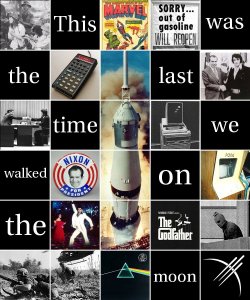To commemorate the 41th anniversary of the moon landing, Darryl Cunningham has made a fantastic strip outlining the common Moon myths and how to debunk them. He did a great piece of Homeopathy last time, and this one is equally great.
Click on the above image to go to the full strip. One of the common misconception that moon hoax ‘pioneers’ raise is the rippling of the flag. How does the flag ripple even though there is no atmosphere on the Moon? Or the fact that there are no scorch marks from the ship landing. Find the answer to these and more! Great Friday morning read to reaffirm my faith in Science and rational thinking.
How astronauts keep time in space.
SpaceWeather has great pictures on the ISS going past the Sun with some prominences and decaying sunspots.
“I used Calsky to predict the transit,” he continues. “It was right on time.” The ISS moves fast, orbiting Earth at 17,000 mph, and it crosses the face of the sun in only 0.5 seconds. He caught the passage using a digital video camera attached to a 6-inch refracting telescope. And that’s not all. “In addition to the ISS, there were several prominences, decaying sunspot 1087, and a new eruptive area coming into view over the sun’s eastern limb.”
Nice video showing the man-made threat to Space Exploration.








